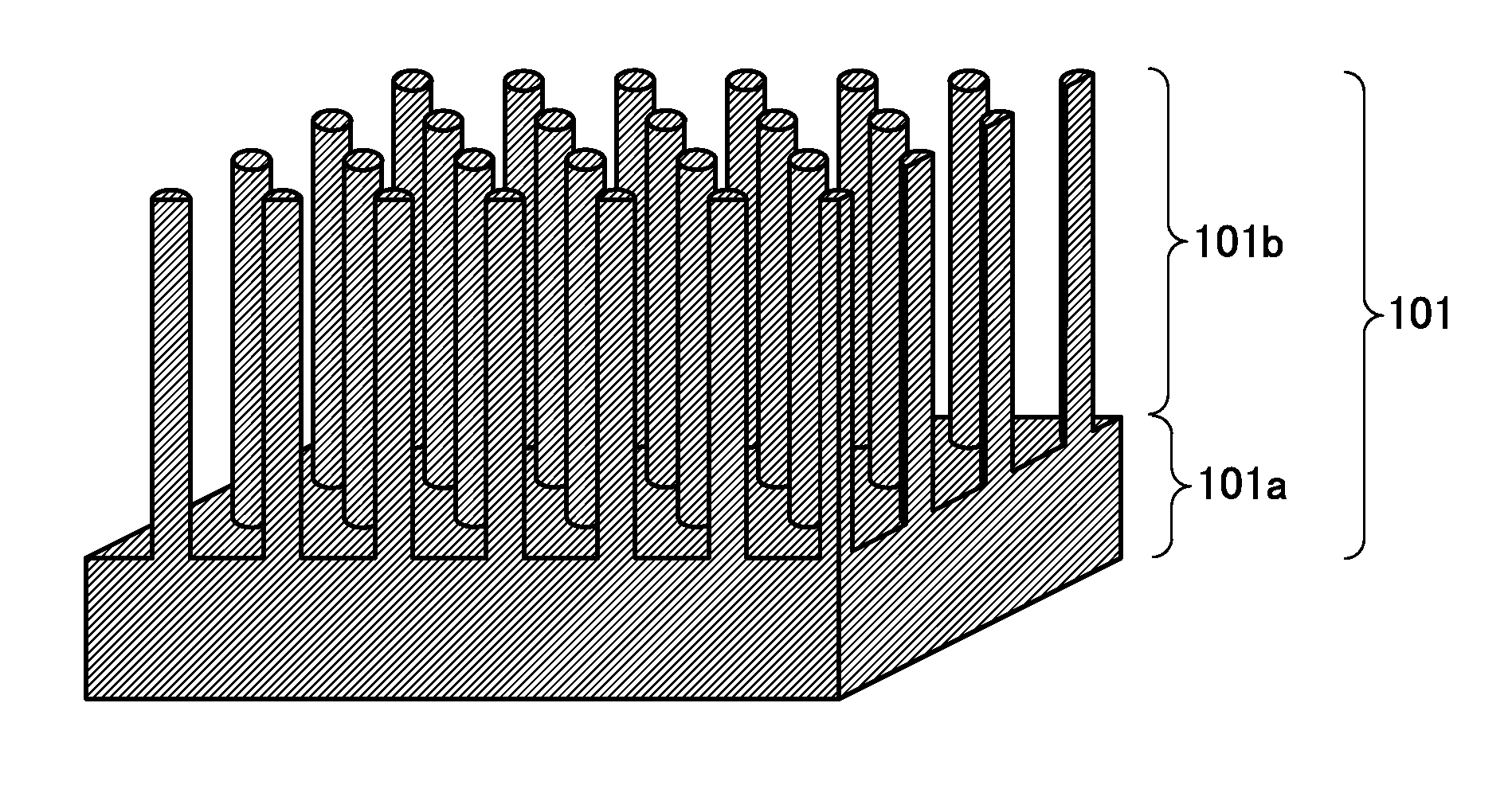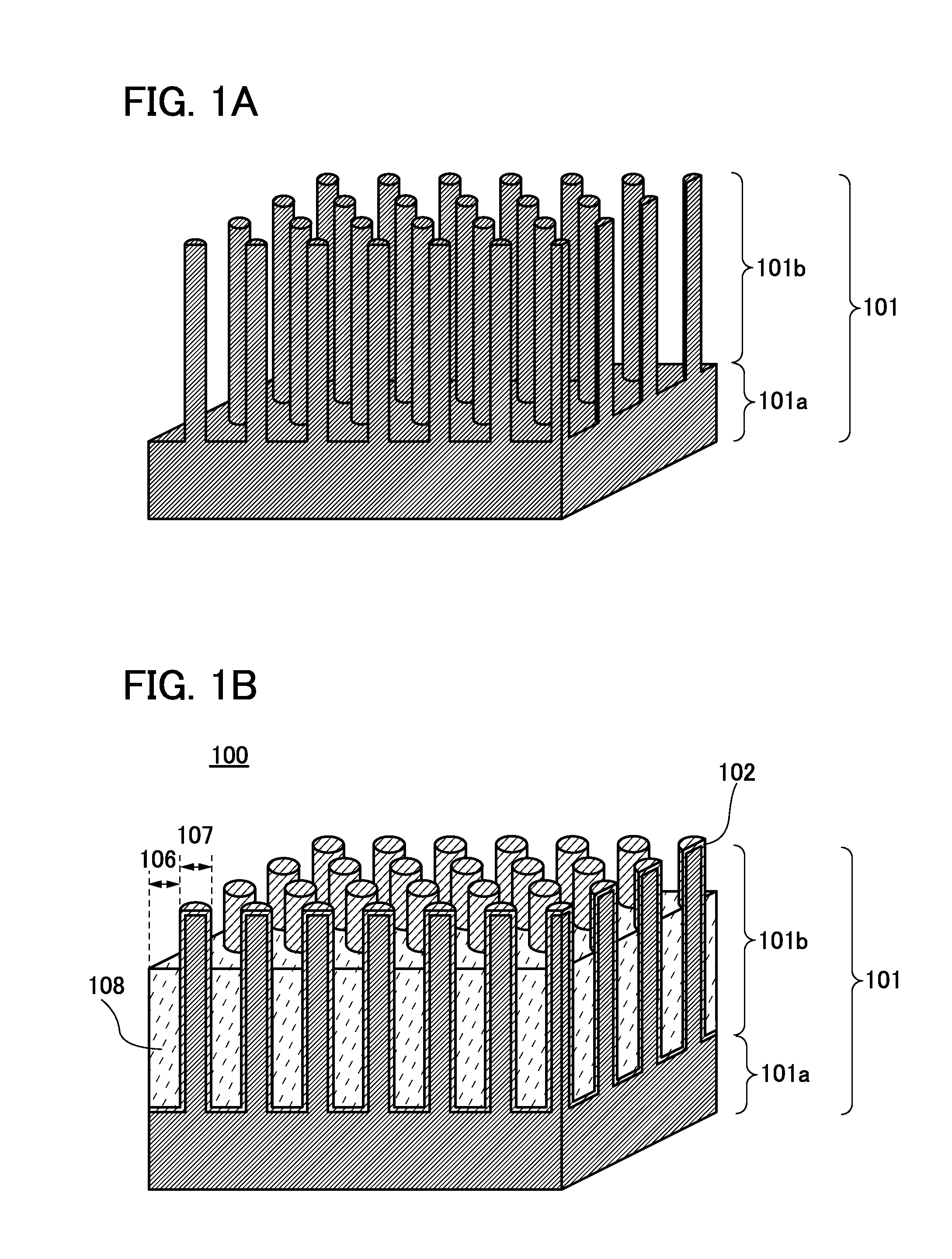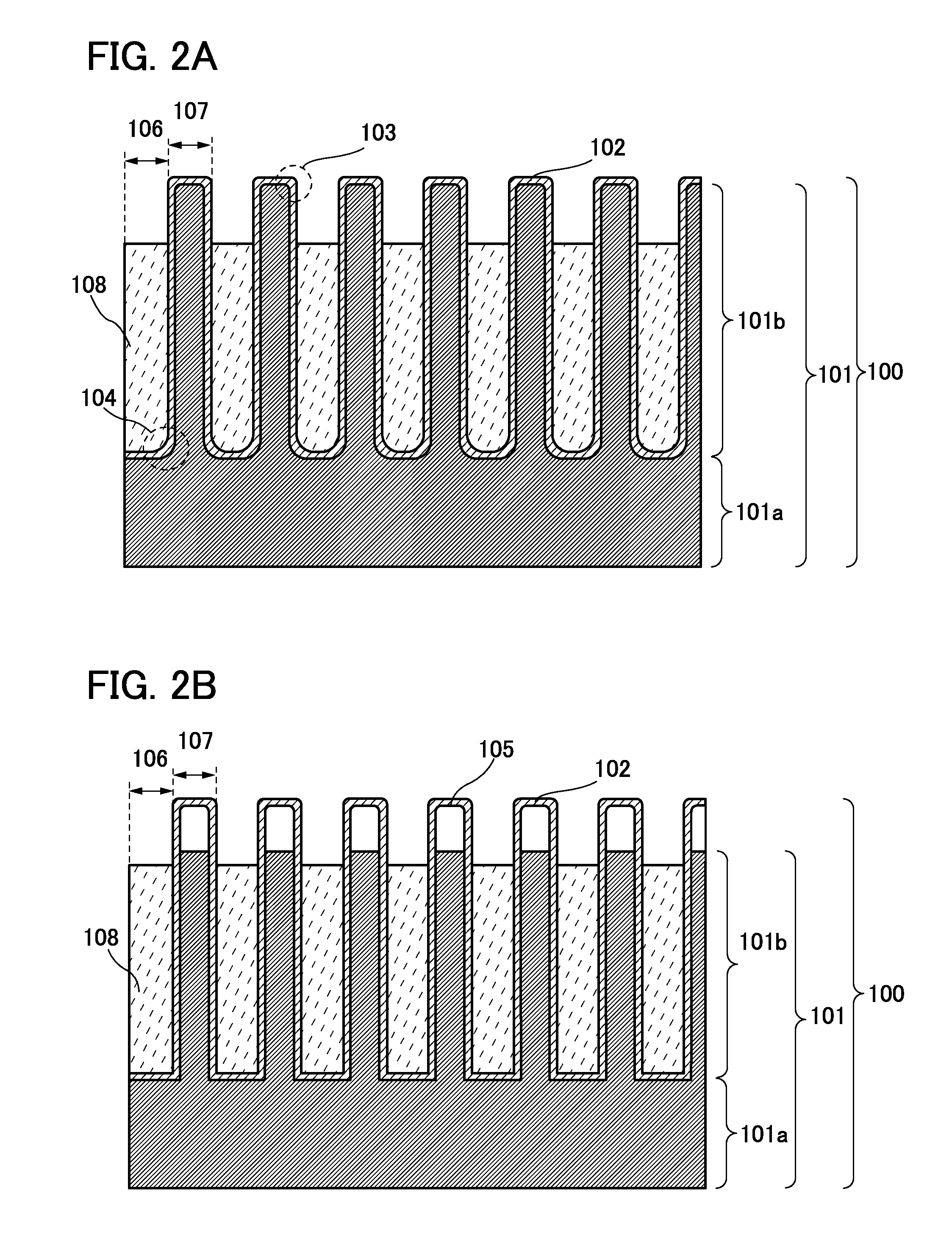Negative electrode for secondary battery and secondary battery
a secondary battery and negative electrode technology, applied in the direction of active material electrodes, climate sustainability, sustainable manufacturing/processing, etc., can solve the problems of difficult to maintain the reliability of a battery, ensure reliability in terms of cycle characteristics, and increase the volume of the active material, so as to improve the charge and discharge cycle characteristics, reduce the effect of breakage and separation of active materials
- Summary
- Abstract
- Description
- Claims
- Application Information
AI Technical Summary
Benefits of technology
Problems solved by technology
Method used
Image
Examples
embodiment 1
[0055]In this embodiment, a structure of a negative electrode for a secondary battery, which is less likely to deteriorate due to charge and discharge and has good charge and discharge cycle characteristics, and manufacturing methods of the negative electrode are described with reference to FIGS. 1A and 1B, FIGS. 2A and 2B, FIGS. 3A to 3I, FIGS. 4A to 4D, FIGS. 5A to 5D, FIGS. 6A to 6D, FIGS. 7A to 7D, and FIGS. 8A to 8C.
[0056]The secondary battery is a secondary battery in which a electrolyte solution is used and carrier ions are used for charge-discharge reaction. In particular, a secondary battery in which lithium ions are used as carrier ions is referred to as a lithium secondary battery. Examples of carrier ions which can be used instead of lithium ions include alkali-metal ions such as sodium ions and potassium ions; alkaline-earth metal ions such as calcium ions, strontium ions, and barium ions; beryllium ions; magnesium ions; and the like.
(Structure of Negative Electrode)
[00...
embodiment 2
[0144]In this embodiment, a structure and a manufacturing method of a secondary battery are described.
[0145]First, a positive electrode and a manufacturing method thereof are described.
[0146]FIG. 9A is a cross-sectional view of a positive electrode 300. In the positive electrode 300, a positive electrode active material layer 302 is formed over a positive electrode current collector 301.
[0147]The positive electrode current collector 301 can be formed using a material having high conductivity such as stainless steel, gold, platinum, zinc, iron, copper, aluminum, or titanium, or an alloy thereof. Alternatively, the positive electrode current collector 301 can be formed using an aluminum alloy to which an element which improves heat resistance, such as silicon, titanium, neodymium, scandium, or molybdenum, is added. Further alternatively, the positive electrode current collector 301 may be formed using a metal element which forms silicide by reacting with silicon. Examples of the metal...
embodiment 3
[0202]A secondary battery of one embodiment of the present invention can be used for power sources of a variety of electrical appliances which can operate by power.
[0203]Specific examples of electrical appliances using the secondary battery of one embodiment of the present invention are as follows: display devices of televisions, monitors, and the like, lighting devices, desktop personal computers and laptop personal computers, word processors, image reproduction devices which reproduce still images and moving images stored in recording media such as digital versatile discs (DVDs), portable CD players, portable radios, tape recorders, headphone stereos, stereos, table clocks, wall clocks, cordless phone handsets, transceivers, portable wireless devices, cellular phones, car phones, portable game consoles, toy, calculators, portable information terminals, electronic notebooks, e-book readers, electronic translators, audio input devices, video cameras, digital still cameras, electric ...
PUM
| Property | Measurement | Unit |
|---|---|---|
| aspect ratio | aaaaa | aaaaa |
| angle | aaaaa | aaaaa |
| angle | aaaaa | aaaaa |
Abstract
Description
Claims
Application Information
 Login to View More
Login to View More - R&D
- Intellectual Property
- Life Sciences
- Materials
- Tech Scout
- Unparalleled Data Quality
- Higher Quality Content
- 60% Fewer Hallucinations
Browse by: Latest US Patents, China's latest patents, Technical Efficacy Thesaurus, Application Domain, Technology Topic, Popular Technical Reports.
© 2025 PatSnap. All rights reserved.Legal|Privacy policy|Modern Slavery Act Transparency Statement|Sitemap|About US| Contact US: help@patsnap.com



